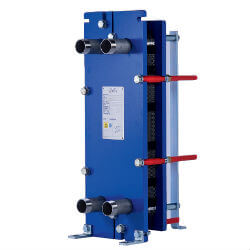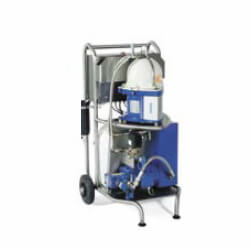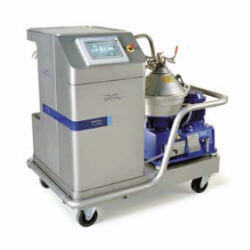Heat Exchangers
Alfa Laval Plate Heat Exchangers
Construction
There are a series of parallel corrugated metal plates placed above each other so that the formation allows for the fluids to flow between them. The plates are assembled between a frame and plate held together by tightening bolts. The plates have gaskets that are supposed to act as seals and direct the fluids into alternate channels. The corrugation helps to generate fluid turbulence and helps against the differential pressure. There are inlet and outlet portholes for the hot fluid to flow from one side and come out of the other, cold. There is an exchanger in the alternating channels to allow this to happen when the fluids are divided into parallel streams to produce a counter current. These come in different configurations
- Parallel
- In series
- Mixed
You can control the flow rates by running the exchanger twice according to the pressure drop of the two fluids. These heat exchangers are used in dairy, food, beverage, and other industries
Centrifugal separator
Inside the rotatory cylinder as well as the screw conveyor will be rotating concurrently to enable the centrifugal force to work on the liquid and coagulants that are fed into the separator, making sure that the speed of the screw conveyor is slightly slower than that of the rotary cylinder.
The cylinder will have a separated solid matter, and the liquid is separated as required. The solid matter is present in the screw conveyor is then dehydrated and discharged. The liquid that is obtained after separation overflows the dam and gets discharged.
This technique is used for separating liquids from liquids and liquids from solids. So far, it has been crucial in the pharmaceutical industry, marine industry, fuel industry, etc.
Disc stack centrifuge works
In this separation, solids and liquids are separated according to their densities. The separator uses extremely high centrifugal forces to separate the solids or the liquids. The solids are pushed to the periphery, whereas the less dense liquid phases form concentric inner layers. Here the separation process can either be continuous or discontinuous depending on the amount of separation amount of solids.
Kinds of separators
- Clarifiers: helps remove particles, sediments, oil, organic matter, and color from process liquids
- Purifiers: helps separate oil from water (liquid to liquid separation/liquid to solid separation)
- Concentrators: three different phases are used to separate the solid phase and then the two liquid phases, which happen to be different densities.
Alfa Laval has revolutionized innovations in separation technology expertise, and New Ball Bearings Co. (NBBC) has made it available and has been a foremost distributor in the country.
Product Guide: https://productguide.alfalaval.com/en-in/?companyId=c454

M 6 Plate Heat Exchanger

Centrifugal Separation

Centrifugal Separation
